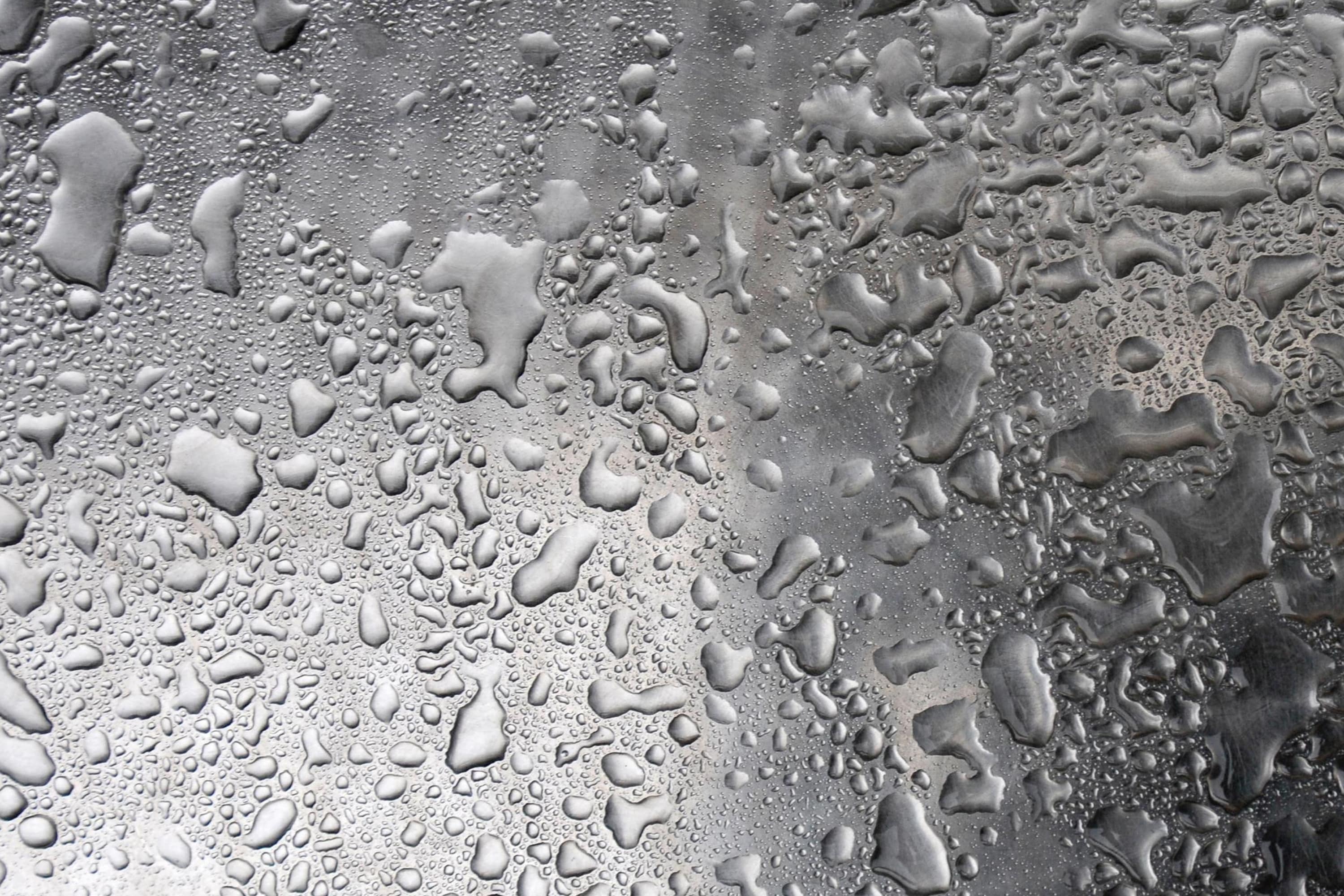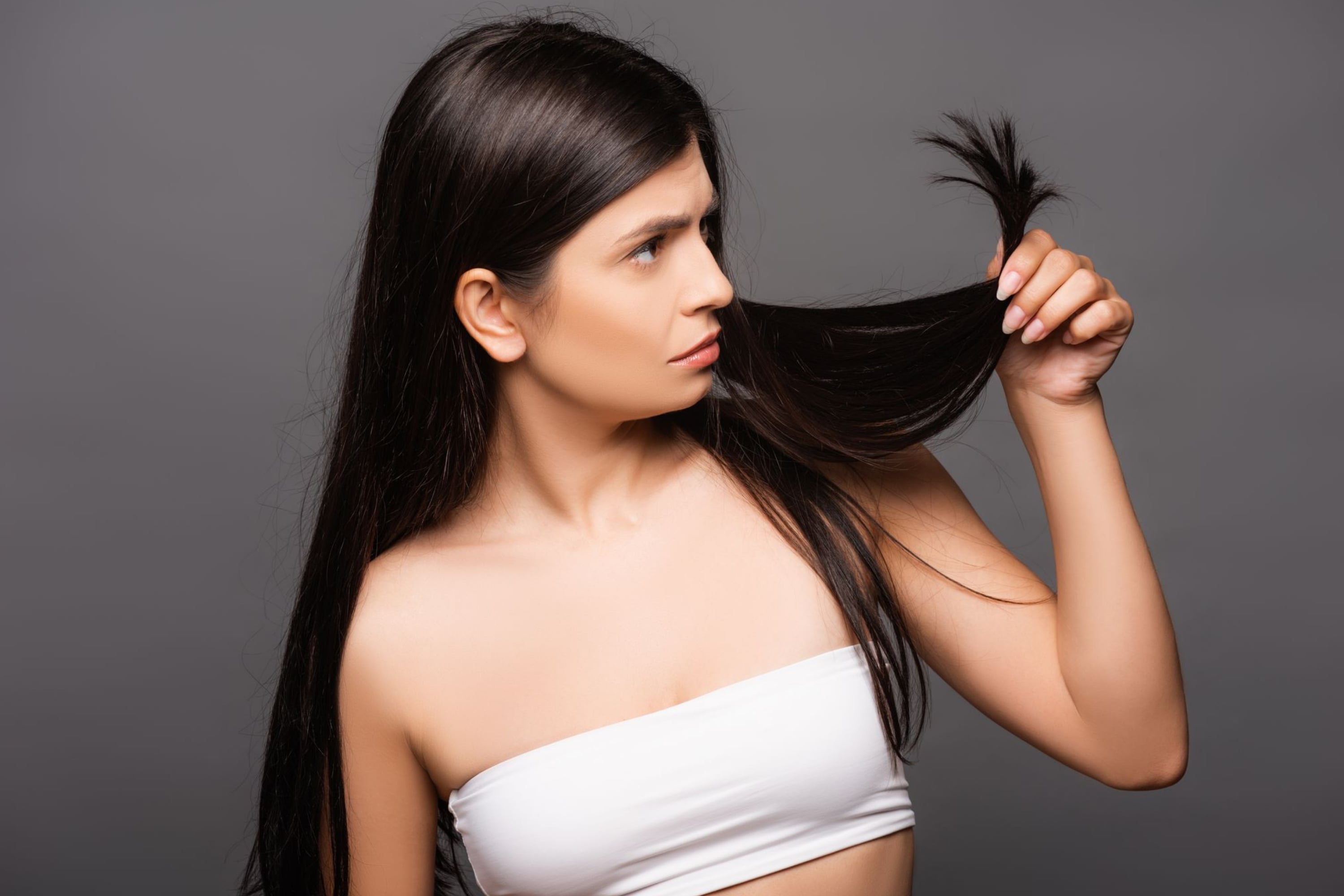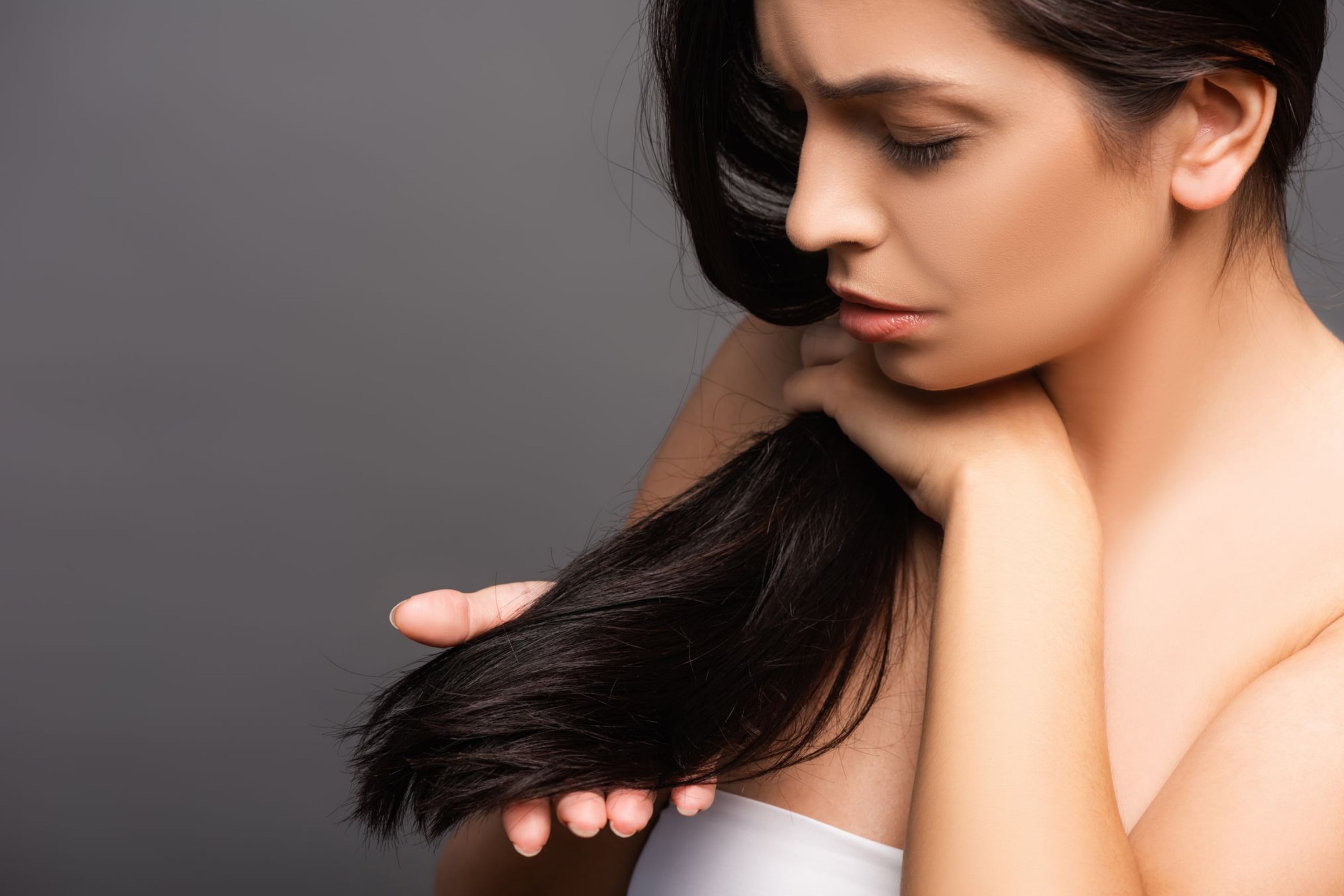Having frizzy hair is annoying and it usually takes quite a lot of time to fix this problem. Besides, frizzy hair doesn’t look nice and healthy. However, when you face wet frizz, you may become pretty puzzled.
How come that my tresses develop frizz while still being soaked-wet?! And for sure, you want to know what makes your hair like that.
In this article, we will try to explain to you why your hair becomes frizzy when still wet, as well as provide you with some useful guides on how you can cope with this problem.
In addition, you are going to find out how this frizzy problem can be solved. After you read this article, you will be able to keep your mane smooth and silky much easier!
What Leads to Wet Frizzy Hair?
Before you can move on to the recommendations on how to get rid of wet frizzy hair, you should learn what causes wet frizz. As you probably know, our hair can react to water and moisture in many different ways.
Some people’s hair can stretch when being wet, others have their hair swelled instead, or it may also shrink. And while wet frizz can be generally attributed to the natural shape-shifting of the hair, in most cases, it is directly related to the poor condition of the cuticle layer.
Read on to find out about the most common causes of wet frizz on your head!

Water Expands the Hair’s Cuticle Layer
First of all, healthy hair will change shape when it’s wet. It can stretch up to 30% of its original length without damage and 12-18% in weight!
But when your hair is damaged, it develops gaps on the cuticle layer. Those gaps allow more water to pass through.
As a result, the hair shaft stretches and swells more than it’s supposed to, eventually buckling past the cuticle.
When this happens, the expansion lifts the hair cuticle scales away from the axis of the hair. It makes the surface of your hair rough and prone to tangling instead of nesting and clumping together properly.

Dry Hair As a Result Of the Lack of Hydration
When your hair is too dry, it will soak up any type of moisture it can reach. This is why, by trying to compensate for the lack of hydration, dry hair tends to absorb moisture in excess.
Of course, it causes water molecules to disrupt the hydrogen bonds within the inner structure. This causes swelling that forces the cuticle layer to distort and become rough and frizzy.

Your Hair Might Be Damaged
Wet hair is weaker than dry hair in tensile strength. Being styled when damp, the hair also becomes vulnerable to breakage.
For example, if your hair is damaged by heat styling or chemical treatments, it has a more fragile structure. As a result, it can be overwhelmed by the excess swelling.
Compared to healthy hair, which can expand by 30% of its length, damaged hair can stretch between 30% to 70% causing irreversible changes. These changes are known as weathering of the hair and they lead to excessive tangling and frizzing even when the hair is wet.
Your Hair Has High Porosity
Hair porosity measures how well your hair can absorb and retain moisture. It also highly depends on the condition of the cuticle layer of the hair shaft.
When it is tightly packed and has no gaps, it is called low porosity. But when the cuticle layer has loose scales, gaps, and cracks along the surface, it’s called high porosity.
When the hair is highly porous, it tends to trap water to keep itself damp longer. As a result, high porosity hair takes more time to dry.
In addition, it stays in an expanded and stretched state for much longer, which contributes to tangling and wet frizz that looks like webbing.
Buildup
Most people think that buildup is the accumulation of styling hair products, for example, styling gels, mousses, leave-in products, oils, etc.
However, it can be also formed by dirt, sebum, as well as different environmental elements like hard water minerals that get anchored to the hair and don’t rinse out completely.
Over time, all this stuff accumulates on the hair strands and creates a barrier, thus preventing moisture from getting in. It means that all the moisturizing products you use will be simply remaining on top of your hair rather than soaking into it!
Of course, the effect will be way less prominent in this case. The buildup also prevents hair conditioners from doing their job properly, this is why it is impossible to smooth out and eliminate frizz when washing your hair.

Hard Water
Another common cause of frizzy hair is hard water. If you have hard water at home, know that it contains high levels of minerals such as calcium, magnesium, iron, and chlorine. These minerals continuously accumulate on the hair and scalp.
However, you can’t just wash them all out with the regular shampoo since it’s not strong enough to break through! This is the biggest problem with hard water in fact.

So you will need a hard water demineralizing shampoo to be able to neutralize the mineral buildup.
This is why, if you have hard water but you don’t use a hard water shampoo, you most likely have mineral buildup in your hair. This coating makes the cuticles rough and blocks essential moisture.

Improper pH
The acidity (low pH) of our hair is natural, this is why it is essential to keep the pH low so that the cuticle cells stay closed. However, the shampoos that we use are typically more alkaline.
On the one hand, it is needed to gently lift the cuticles and wash away grime and product buildup that has accumulated between gaps.
However, shampoos can’t close down the cuticles once the deep cleaning is done. If you swing the pH to the other extreme (alkaline), the cuticle layer will flare up, loosening the scales. That’s why alkaline elements increase negative electrical charges on the hair, increasing friction and frizz.

This is why it is advised to use a hair conditioner right after washing your hair with shampoo.
Conditioners help to rebalance the pH of the hair after washing. Also they effectively lower pH. It makes the cuticle scales to flatten down, making your hair smooth and shiny.

Too Much Protein
Protein is basically good for the hair as it helps to strengthen the inner structures and preserve elasticity. But too much protein can have the opposite effect, making your hair feel dry, stiff, and bloated!
Because of this, it is important to have a good balance of moisture and protein in the hair. Lack of protein will make your chevelure feel limp, while too much of this element will make your hair feel stiff and heavy when damp.
To solve the issue, opt for a protein treatment like keratin every 3-4 months. It provides the optimal balance of protein and other hair boosters like collagen, amino acids, and antioxidants to rejuvenate and repair the hair.

Improper Moisturizing
If your hair is not drying out fast and holding on to the water for longer than expected, then it’s a sign that you’re not moisturizing enough.
When washing your hair, it’s essential to avoid leaving your hair in a wet and fragile state for too long, as this is when it’s more likely to become frizzy.

Using the Wrong Shampoo
Many shampoos contain harsh detergents like sulfates that dry out the hair, making it look and feel like straw. Of course, it later leads to frizz! We recommend you shift to natural shampoos that don’t contain sulfates instead, but it may take you some time until you pick the shampoo that suits you best.
Like that, now you know what factors may lead to hair being frizzy even when it’s wet. As you can see, the reason can be not only in some external factors like product’s buildup or harsh water. It can be your hair itself that needs proper treatment and care to retain moisture better.

What Wet Frizz Looks Like?
Even though having wet frizz is not ok, you should know that it is normal to experience a small amount of frizz when the hair gets wet.
But if you have too much, it can be a sign of certain problems with the condition of your hair or your hair care routine. Besides, wet frizz may have several forms so we suggest you learn more about how each of them can look.
Stringy, Mushy, and Gooey Hair
With this type of frizz, the hair feels dry even when wet. You can also find sections of your hair that stick together, and some sections cannot form uniform clumps. Overall, your mane has a messy texture of frizzy curls that are hard to handle and style.

Frizz Webbing
Frizz webbing is a condition of hair that causes wet strands to look dry and frizzy. It often results in a tangled mop of hair. Curly and wavy hair types are more prone to webbing.
The best way to avoid this is by using a wide-toothed comb or a detangling brush on soaking wet hair, gently combing through from the bottom up.

Types of Wet Frizzy Hair
Wet frizz can show up in many different ways. It usually depends on your hair texture and the overall condition of the mane. Below, here are the most common types of wet frizz that affect damp hair.

Halo Frizz
Halo frizz is the type of wet frizz that forms around the crown of the head. It is often caused by uneven hair strands that refuse to lie flat with the body of the hair.

Frizzy Roots
Frizzy roots show up when the hairs that are closer to the scalp get a fluff-and-puff texture, creating a frizz. A dry scalp or breakage near the roots often becomes the cause of this type of wet frizz.
Spider Web Frizz
This type of wet frizz usually occurs near the mid-lengths and ends of the hair, where individual strands wrap up around each other to create a spider web effect. People usually describe this as frizz webbing.
So how do you get rid of all these types of et frizz?
Well, this is going to require a complex approach so that you could troubleshoot as many causes as possible.
How to Get Rid Of Wet Frizz?
Wet frizz on your hair may look different, but if you want to get rid of it, you will have to use the same procedure and approach. Below, we have provided you with a complete list of actions needed to bring your mane back to life and make it smooth and glossy again.

Clarify Your Hair Weekly
Before you start using any products, make sure your hair is clean. Start with a deep cleansing shampoo to remove any buildup or residues that may be covering your hair strands, preventing them from absorbing moisture.

Change Your Hair Products
Getting rid of frizz often means changing your hair products. You may be using too much or using the wrong ones. What you can do is to discard everything and start by adding new products one by one, keeping an eye on how your hair reacts.
Also, you might want to look for anti-frizz products. From shampoos to serums and anti-humidity sprays, you can find a product that can reduce and eliminate frizz at every stage of your hair care routine.

Get The Right Shampoo
It can be your shampoo that provokes frizz! Do an experiment and try changing your shampoo for one week and see how your hair reacts. Also, when changing your shampoo, get the one with zero sulfates and ideally formulated at low pH.

Use a Good Anti-Frizz Conditioner
Add more water and conditioner if you see frizz in your wet hair. Conditioners are acidic and intended to seal the cuticle layer and minimize wet frizz. Unless you’re going to use a deep conditioner as a follow-up, don’t skip the conditioner.

Use a Wide Tooth Comb to Detangle in The Shower
Wide-tooth combs are great for frizzy hair because they have more gaps through which hair can pass, preventing breakage. Alternatively, you can also use your fingers to gently detangle your hair after washing.
Anyway, both methods are better than treating your hair with plastic brushes, which can cause friction and static in the hair!
So, this is what can help you cope with the wet frizz on your hair. Now you know what factors make it develop, and also, now you are aware of how this problem can be solved.
For achieving better results, we would suggest you make use of several tips from those we shared with you. Like that, you will make sure that your hair gets all it needs. And also, you can be sure that the issue is targeted and treated on many levels.
[wp-faq-schema title=”Frequently Asked Questions”]

I have wavy fine hair and I’ve noticed that it started getting frizzy after I moved to my new apartment. What could be the reason? I use the samme hair products as before.
I’m pretty sure it’s the watr to blame! I had the same issue last year and then we had extremely hard water! I tried tons of shampoos designed for hard water but none of them worked well enough for me. So I had to install water filters all over the apartment.
Hi everyone! I need your help, folks. Can using a detangling brush help me with the wet frizz? I mean, if I only use the detangler?
Hello there. Well, why don’t you want to try some anti-frizz products as well? using a detangler can be helpful for sure, but I guess it won’t be enough for dealing – and moreover for fixing – the wet frizz!